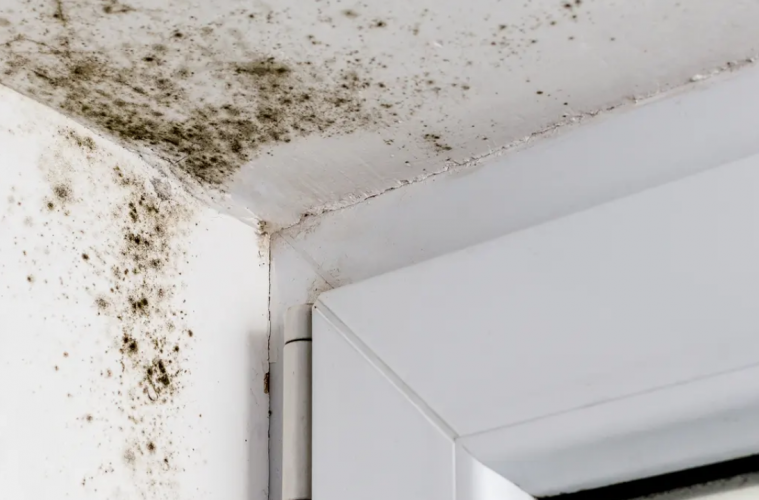There’s no place cozier than home, but with the change in season comes an unwelcomed guest – mould! If you’ve noticed black spots on your ceiling, between tiles or growing behind fixtures, it’s likely that mould has made itself comfy in your home…
Don’t panic, mould is a common problem that affects many households, especially during the colder months. Wet weather and condensation provide the perfect environment for mould to thrive and grow.
If you want to banish mould from your home, here’s how to combat and prevent the unpleasant spores from spreading:
Why is there mould growing in my home?
Mould is a type of fungus that thrives in damp, humid environments. It spreads by releasing spores into the air, which can easily find their way into our homes. Mould spores exist naturally in the environment so there’s no way to prevent them from settling and becoming problematic.
Moist, warm and damp environments (like the bathroom) are the ideal conditions for mould spores to spread and thrive. When they land, they begin to grow rapidly. Mould can grow on different surfaces, including fabric, paper, wood, glass, and plastic. As they grow, they may even digest the material they are growing on…Oh dear, where did the wallpaper go!?

Unsplash
What causes mould to grow?
Mould is commonly caused by condensation in the home, which is caused by:
Moisture buildup
Winter often brings increased moisture due to rain and condensation on windows, leaky roofs, or pipes, and reduced ventilation. These conditions create the perfect breeding ground for mould.
Reduced air circulation
During winter, we tend to keep our doors and windows closed to maintain warmth, leading to limited air circulation. This lack of fresh air can result in increased humidity levels and create an environment conducive to mould growth.
Heating systems
Indoor heating systems can also contribute to mould growth. Forced-air heating can dry out the air, while other types, such as radiant heating or baseboard heaters, may create warm and humid conditions near the floor, promoting mould growth.

Pexels
How to get rid of mould in your home
There are several ways to combat mould in your home:
Control humidity levels: Use a dehumidifier. Monitor areas prone to moisture, such as bathrooms, kitchens, and basements.
Proper ventilation: Open windows periodically or use exhaust fans to remove excess moisture.
Inspect and fix leaks: Regularly check your roof, windows, and pipes for any signs of leaks.
Increase air circulation: Use ceiling fans at low speeds to create gentle airflow. Position furniture away from walls to promote better air movement.
Clean and dry wet surfaces: If you notice condensation or wet surfaces, dry them immediately. Wipe down windows, walls, and surfaces prone to moisture regularly.
Insulate and weatherproof: Proper insulation helps prevent condensation on cold surfaces. Check windows and doors for drafts, and seal any gaps or cracks.
Regular cleaning: Regularly cleaning and vacuuming your home to eliminate mould spores prevents their settlement. Use mould-resistant cleaners or natural alternatives like vinegar and hydrogen peroxide to tackle existing mould growth.
Tip: Avoid leaving damp clothes or towels lying around, as they contribute to excess humidity.
Mould busters…
There are a variety of cleaning products specially formulated to target and get rid of mould. Here are a few available locally:

Mambo’s Mould Remover 500ml for R 34.99.


Takealot: Genkem Mould Stop Advanced Mould & Mildew Stain Remover 500ml for R77.00.

Builders: TFC 500ml Mould Buster for R98.00.
How does mould impact your health?
Mould does not only lead to significant damage to your home, but it can also cause some serious health issues such as respiratory problems, strong headaches and sinus congestion and irritation of skin and eyes. If you find yourself struggling with any of the following health issues consistently, you may be battling a case of mould:
- Breathing problems.
- Allergies.
- Bronchitis.
- Sinusitis.
- Pneumonia.
- Skin and eye infections.
It’s important to visit your GP if you suspect that the mould growing in your home may be impacting your health!
Compiled by Amy Steenkamp for Woman&Home.
Feature image: Pexels


